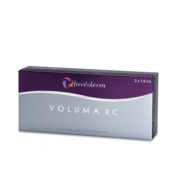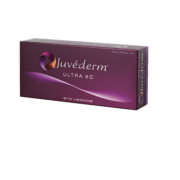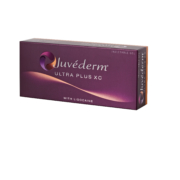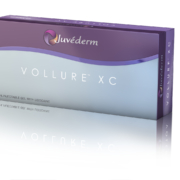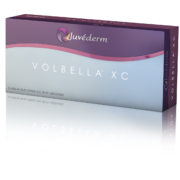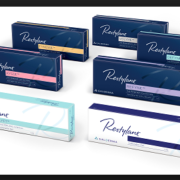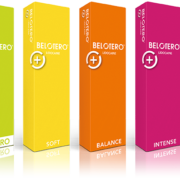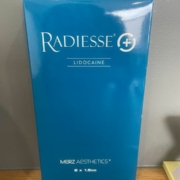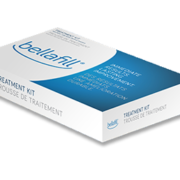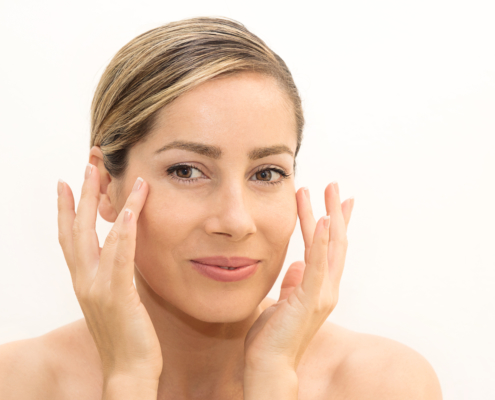What is filler?
Soft tissue fillers, often called dermal fillers, are injectable gel like substances used alone or in combination of other procedures to restore or add volume, correct wrinkles, and contour the face. As we age we lose fat volume and skin elasticity in our faces that can cause wrinkles, sagging of the skin and a hollowed appearance. Fillers are often used to help prevent or correct these defects.
Common treatments goals include:
- Adding volume to the lips
- Adding volume or contour to the cheeks
- Contouring the chin, jaw and even nose
- Decreasing the appearance of shadows under the eyes, cheeks or temples
- Softening wrinkles and folds throughout the face and neck
What are the different kinds of filler?
There are many different types of filler on the market today, the most common being the hyaluronic acid (HA) based fillers. There are also collagen fillers, fillers that are made from substances found in bone, semi-permanent fillers and many more. The market has moved away from silicone, and in fact it is banned in many regions, but fat transplants are another alternative that may be done by a plastic surgeon. We will discuss each class of commonly used fillers in this section and then move onto each individual filler brand in the next section.
Hyaluronic acid fillers: HA is a naturally occurring substance found in the skin. It plays a key role in the skin’s structure and function and also helps to maintain moisture. HA is broken down at a very rapid rate in the human body (more on this later), so in order to ensure that the filler lasts it is cross linked with other substances. The consistency of HA fillers vary in thickness but are typically soft and gel like, and when used correctly provide a very natural appearing results. They are also considered very safe, and being the most common, they are the most studied.
Examples of HA fillers are Juvederm, Restylane, and Belotero.
Calcium hydroxylapetite (CaHA): CaHA is also naturally occurring in our bodies, mainly in bone. As a filler, CaHA molecules are suspended in a gel carrier. Once injected, the gel is absorbed by the body leaving the microspheres which provide a matrix for collagen to form. It is eventually degraded by the body but some believe that the collagen production builds up over time the more consistent the treatment.
Radiesse is an example of a CaHA filler.
Polymethylmethacrylate (PMMA): this is a semi-permanent filler that consists of PMMA molecules submerged in bovine collagen. The collagen allows the injector to know the effects of filling and also aids to evenly distribute the PMMA microspheres in the targeted area. Over 1-3 months the body absorbs the collagen and as the immune system binds to the molecules it stimulates it’s own collagen matrix to fill in. In theory the innate collagen will fill in while the foreign collagen is being absorbed but there can sometimes be a lag period. PMMA molecules are too large to be ingested by the immune cells and remain in the body so this is considered a permanent implant.
Bellafill is a PMMA filler/implant.
Poly-L-Lactic acid: is a synthetic substance that has been used for years in medicine, such as in dissolvable stitches, and when used for cosmetics comes in the form of tiny injectable spheres in gel. The gel is dissolved and the spheres remain to provide a matrix for collagen production similar to above. However, it does not have a filler like effect when first injected and the result is seen over time. So technically Sculptra is not a filler.
Sculptra is an example of a Poly-L Lactic acid collagen stimulator.
Filler brands
This section will provide a brief description of commonly used fillers. Indications and pricing may vary dramatically among clinics based on their own experiences, preferences and costs. This is meant to be a guide only.
Juvederm Voluma: as implied by the name, this filler it is primarily used to restore volume and has the largest amount of HA concentration of this family of fillers. It is FDA approved for use in the mid-face and is most commonly used in the cheek area. It is typically injected deep, on the bone. This product does contain lidocaine to help with comfort.
Lasts: up to 2 years with optimal correction
Average cost: $800-1400/syringe
Average used per treatment: 2 syringes
Juvederm Ultra: this is a HA filler that is FDA approved for use in and around the lips. It is probably the most common lip filler on the market. It is hydrophilic (attracts water) so swelling is quite common for a few days post injection. After swelling goes down the lips appear full and natural, when used correctly. This product does contain lidocaine to help with comfort.
Lasts: up to 1 year with optimal correction
Average cost: $600-700/syringe
Average used per treatment: 1 syringe
Juvederm Ultra Plus: HA filler that is slightly thicker than Ultra and is most commonly used in the nasolabrial folds and around the mouth (like for marionette lines). It can also be used in the lips for a more dramatic result. This product does contain lidocaine to help with comfort.
Lasts: up to 1 year with optimal correction
Average cost: $600-750/syringe
Average used per treatment: 1-2 syringes
Juvederm Vollure: one of the newer HA fillers used to soften parentheses lines around the nose and mouth, including marionette lines. This product does contain lidocaine to help with comfort.
Lasts: up to 18 months with optimal correction
Average cost: $800-1400/syringe
Average used per treatment: 1-2 syringes
Juvederm Volbella: this is a softer filler used for lip enhancement as well as wrinkles around the lips and mouth. This filler provides a softer look in the lips when compared with Juvederm Ultra. This product does contain lidocaine to help with comfort.
Lasts: up to 12-18 months with optimal correction
Average cost: $600-700/syringe
Average used per treatment: 1 syringe
Restylane: this was the first FDA approved HA filler and is commonly used in the lips, tear troughs and for moderate to severe wrinkles. It is injected with lidocaine for comfort. Like the Juvederm family there are several different types of Restylane as you can see in the photo.
Lasts: depending on area treated 6-12 months
Average cost: $400-800/syringe
Average used per treatment: 1-2 syringes
Belotero: HA filler used for moderate to severe wrinkles and is commonly used in the lips and around the mouth. Some use this for tear troughs as well. It is injected with lidocaine for comfort.
Lasts: around 6 months
Average cost: $450-600/syringe
Average used per treatment: 1-2 syringes
Radiesse: calcium hydroxylapetite filler used for moderate to severe wrinkles and is great for volume loss and contouring, particularly in the cheeks, chin and jawline. Radiesse does tend to swell but once it settles the results appear very natural. Each syringe of Radiesse is 1.5ml compared to the average 1ml of most other products. It can be injected with or without lidocaine.
Lasts: 18 months
Average cost: $700-900/syringe
Average used per treatment: 1-2 syringes
Bellafill: PMMA semi-permanent to permanent filler, FDA approved for smile lines but used for full face correction excluding the lips. It is contraindicated in the lips due to risk for nodule formation in this high movement area.
Lasts: up to 5 years or longer
Average cost: $900-1400/syringe
Average used per treatment: 2 syringes
Longevity of each of the above products is based on optimal correction; which means the amount needed to completely correct a deficit. The average person loses about 10% of volume by the age of 35 and an additional 5-10% every 5-10 years thereafter. Still, the amount will vary based on genetics, age, etc. but if a patient in their 50’s has never received filler and is requesting treatment to say the mid-face, it would not be uncommon to require 5-10 syringes to achieve full correction. This can be done at one appointment or over several. We recommend spreading out treatments by about 2 weeks.
Is filler safe?
The majority of side effects from dermal fillers, when injected correctly, are very mild, and considering the amount of people that have fillers injected they are overall exceedingly safe. Typically some discomfort during injection from needle pokes or injection of product; some swelling, redness or bruising; or small nodules are the most common.
Other side effects include but are not limited to: over-correction, asymmetry of the face, larger nodules (early and late), skin discoloration or scarring, a blue tinge to the skin (the tyndall effect), infection or abscess; vascular occlusion leading to skin ulceration or necrosis or even stroke or blindness.
The severe side effects such as vascular occlusion are very rare, King et al. (2018) notes an estimation of 0.001% may have a vascular occlusion and if using an HA filler this is hopefully immediately reversed. An occlusion can occur because of interrupted blood flow near a vessel (via compression) or from direct obstruction from product in the vessel.
Initial symptoms of an occlusion include pain out of proportion to procedure, blanching in the area or distal to the area injected, or other discolorations. This can show up immediately or a few hours later and patients should be instructed to call their provider right away if they note any of these symptoms.
For high risk areas, such as in the glabellar region, we recommend using a blunt tipped cannula. The cannula technique minimizes the risk of puncturing the vessels and inadvertently injecting product into a high risk area. Using a reversible filler in high risk areas is also crucial to safety.
Any of these risks can be minimized by using an experienced and cautious provider that is well versed in facial anatomy, filler composition and technique. Getting a complete medical history, only injecting on patients that are appropriate for treatment, good skin preparation and clean technique are also crucial to minimizing side effects.
Overall millions of people are injected with dermal fillers each year that do not experience any significant side effects but we believe it is always better to be over-prepared. For this reason we keep an emergency kit with us at all times and all of our providers are ACLS (Advanced Cardiac Life support) trained and ready to intervene for any complication or emergency.
Does filler look natural?
Millions of people get filler in the United States each year and chances are that most people around them have no idea. Several of our clients have been giddy that when they returned to work on Monday after a Friday procedure that everyone simply commented on how great they looked. People would ask what they did over the weekend or what their skin care regimen was but could not pinpoint exactly why they looked SO good.
A great treatment is one that is not obviously done, where the client looks refreshed but most cannot tell what is different. Or if looking for a more dramatic result, the enhancement should still look natural on that individual’s face. So if a stranger were to look at the client they would not know that they were not born with naturally high cheek-bones or full lips for instance.
Often when we see people in the media that are over-filled it is likely because they either requested that look or perhaps are still in the swollen phase post-procedure and happened to get caught on camera. Lips for instance can really swell for 2-3 days after injection and can tend to look overdone during this phase. After about a week they look very naturally full.
We personally like to keep it natural. We advocate that less is more and will encourage several treatments of smaller amounts of product to ensure that even with full correction that the results is natural appearing.
Can filler be reversed?
Celebrity Kylie Jenner has reportedly had her lip filler reversed. To learn all about lip filler check out this article.
Hyaluronic acid (HA) fillers can be dissolved with an enzyme called hyaluronidase.
Hyaluronidase is the same enzyme in our bodies that turns over our naturally occurring HA. In aesthetic medicine this enzyme can be used to reverse filler in case of an emergency, for poor results or simply if a patient is not satisfied with their results. If request for reversal is made in the absence of an emergency or poorly placed filler (typically determined by before and after photos prior to and 2-weeks post treatment) there may be additional charges for reversal.
If the filler was not HA based then the enzyme will not work. Additionally, most fillers cause swelling, and sometimes asymmetry of the face, for days or even weeks. We do not recommend having filler reversed until 14 days post procedure to ensure that the swelling is down and the product has had time to settle.
It is also important to be evaluated for other causes of swelling or asymmetry such as infection or inflammation related to a hypersensitivity reaction.
Will hyaluronidase dissolve the natural hyaluronic acid in my skin and make me look worse? The enzyme will dissolve your innate HA in the area but the good news is that it is regenerated almost immediately. The half-life of HA is very short, meaning it does not last long in the body anyways, and is constantly being dissolved and replaced. Specifically, it lasts around 3-5 minutes in the blood, 1-day in the skin and 1-3 weeks in cartilage. So if you decide to have your filler reversed, corrected or it is required in an emergency, likely your own HA will be replaced almost immediately.
An experienced provider can also re-inject you a few days after having your filler dissolved to provide a more desired result.
What are the side effects of filler reversal?
Mainly discomfort during injection consisting of a poke from a needle and a slight burning sensation during the medication injection. Post procedure mild redness, swelling or bruising is possible. Severe side effects are rare but an allergic reaction is possible.
Increased asymmetry or defect may also be apparent when dissolving filler so we recommend being seen within 24 hours after having filler dissolved to come up with a treatment plan with your provider that may include additional enzyme injections and/or refilling.
How long does it take for the enzyme to work?
Depending on the amount of filler to be reversed, how deep it is, and the consistency it could take hours and up to 1-2 days. Most people notice a difference within 1 day. Thicker fillers, such as Juvederm Voluma, require more enzyme to break down than a more simple HA filler such as Juvederm Ultra.
What products cannot be reversed?
Permanent/semi-permanent products such as Bellafill and Sculptra cannot technically be reversed. However, if a build up of collagen occurs in an undesirable area it can be injected with a steroid to break it up.
Radiesse also cannot be reversed but reportedly sodium thiophosphate may be a future reversal agent for this product. This idea was recently introduced at a dermatology conference and human studies are underway.
Some of these are great products but if it is your first time having filler we always recommend starting with a HA filler so that you can have comfort knowing that it can be dissolved if you are not pleased.
Can Vegans get filler?
Most HA fillers (i.e. Juvederm) are made from bacteria and not from animal products like collagen is. So in theory they could be used by vegans. However, products may be tested on animals by certain companies. Click here for Allergan’s statement on animal testing.
Radiesse is also not made from any animal products and is not tested on animals. There were studies >10 years ago on animals when it was going to be used for medical purposes (i.e. vocal cords) but there have reportedly been no studies on animals since that time. The HA fillers from Merz (i.e Belotero) are also not made from animals nor tested on animals.
Products such as Bellafill are immersed in bovine (cow) collagen and so could not be used for vegans.
We recommend that vegans do their research and even call each pharmaceutical company to educate themselves on each product and what would work for them based on their beliefs.
How do I choose a provider for filler?
Ask a lot of questions. A good provider will not mind when a patient has done their research and has questions about a product or procedure. They will also not mind if the patient has questions post procedure. One of our jobs as healthcare providers is to ensure that our patients are well educated and know what to expect and that we will be there for them before, during and after a procedure. It does not matter if someone is a board certified (insert credentials), with 30 years of experience, and treating a million clients a year; if they let their ego get in the way of patient care then it will not be a good experience for the client.
Be wary of someone that says that nothing will hurt or that they can guarantee no side effects. Everyone’s anatomy is slightly different, as well as how they will react to a procedure including pain tolerance. The best thing is to ensure that everything will be done to minimize side effects and that if an adverse effect occurs that they have a plan to fix it.
Don’t pick a provider based solely on price. Someone that charges next to nothing for a procedure might be doing so because they aren’t trained or are getting non-FDA approved or diluted product. If they are simply running a sale then ask what they normally charge and check out their website to get a feel for them. Someone that charges double what the industry charges may be doing so because they have a ton of experience and are charging for their expertise, or they may be charging that because that is what it takes to pay for their fancy office.
Decide what is important to you and trust your instincts on the person and business that you choose. Also don’t be afraid to shop around and get a feel for several different injectors.
Have Questions?
Have questions? We’d love to hear from you! Click below to contact us or to book a consult for Filler.
References
King, M., Convery, C., & Davies, E. (2018). This month’s guideline: The Use of Hyaluronidase in Aesthetic Practice (v2.4). The Journal of Clinical and Aesthetic Dermatology, 11(6), E61–E68.
Papakonstantinou, E., Roth, M., & Karakiulakis, G. (2012). Hyaluronic acid: A key molecule in skin aging. Dermato-Endocrinology, 4(3), 253–258. http://doi.org/10.4161/derm.21923
Souza Felix Bravo, B., Klotz De Almeida Balassiano, L., Roos Mariano Da Rocha, C., Barbosa De Sousa Padilha, C., Martinezt Torrado, C., Teixeira Da Silva, R., & Carlos Regazzi Avelleira, J. (2015). Delayed-type Necrosis after Soft-tissue Augmentation with Hyaluronic Acid. The Journal of Clinical and Aesthetic Dermatology, 8(12), 42–47.
Urdiales-Gálvez, F., Delgado, N. E., Figueiredo, V., Lajo-Plaza, J. V., Mira, M., Ortíz-Martí, F., Rebenaque, C. V. (2017). Preventing the Complications Associated with the Use of Dermal Fillers in Facial Aesthetic Procedures: An Expert Group Consensus Report. Aesthetic Plastic Surgery, 41(3), 667–677. http://doi.org/10.1007/s00266-017-0798-y
Vedamurthy, M. (2018). Beware What You Inject: Complications of Injectables—Dermal Fillers. Journal of Cutaneous and Aesthetic Surgery, 11(2), 60–66. http://doi.org/10.4103/JCAS.JCAS_68_18
